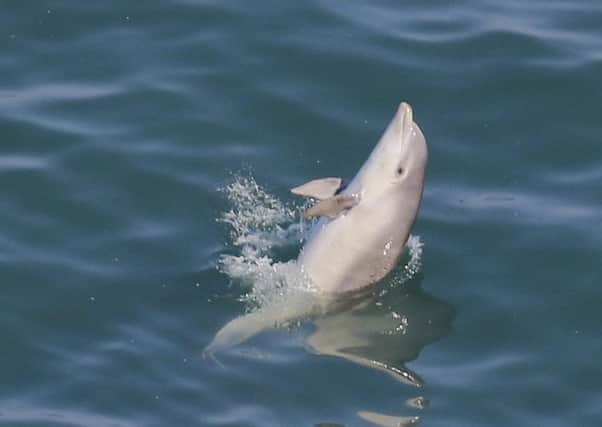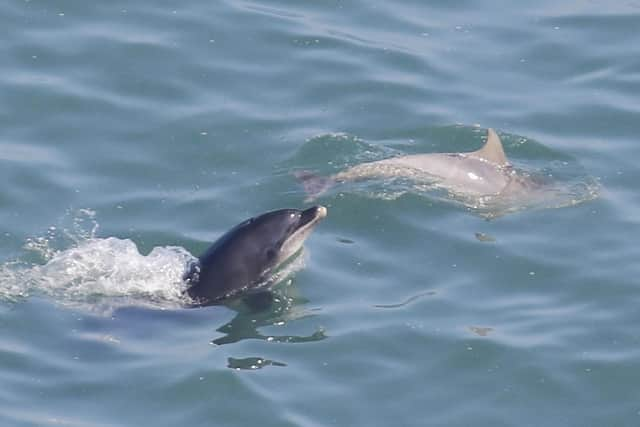Pod of bottlenose dolphins delight visitors at RSPB Bempton Cliffs


Estimates suggest there were around 25 adults moving southerly towards Flamborough, just 50 metres from the cliff. The dolphins were seen ‘breaching’ the waves and a young calf was clearly visible.
Dolphins can swim at a top speed of around 18mph – which would give an Olympic swimmer a run for their money – but the ones spotted from the cliff tops were happy to stop and play, giving photographers the chance to capture some great images.
Advertisement
Hide AdAdvertisement
Hide AdSite manager Dave O’Hara said: “In all probability, it’s the search for food that brings them our way. Bottlenose dolphins enjoy a varied diet including cod, herring, sand eels and haddock – and the North Sea is one great big larder for them. Maintaining this food source is one reason why protecting our oceans is so vital.”


The panoramic views from the cliff top viewing platforms make the nature reserve one of the best places along the coast to scan the sea for cetaceans and recent years have seen a marked increase in sightings – including minke whales and a humpback whale.
It’s also been possible to identify visiting dolphins from distinctive markings such as nicks and scars on their dorsal fins.
Using these techniques, experts confirm there have been regular visits from a population that live in the Moray Firth, in North East Scotland.